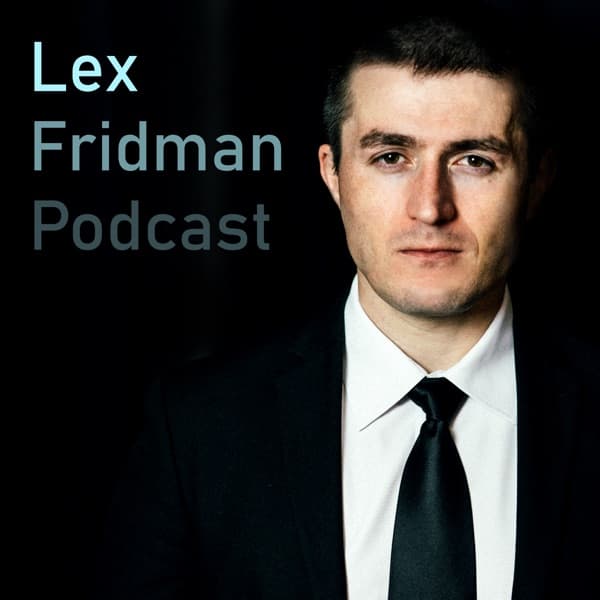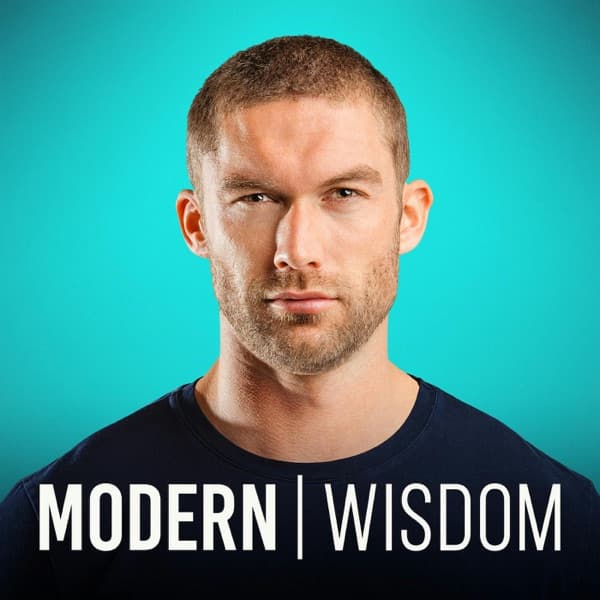How I Built This with Guy Raz: Monica Nassif created successful cleaning brands, Caldrea and Mrs. Meyer's, by innovating in the upscale and accessible cleaning product market.
The Twenty Minute VC (20VC): Venture Capital | Startup Funding | The Pitch: The discussion centers on Grok's innovative approach to AI inference, emphasizing its cost-effectiveness and scalability compared to NVIDIA's GPUs, and the potential of synthetic data in AI training.
How I Built This with Guy Raz - Mrs. Meyer's Clean Day: Monica Nassif

Monica Nassif, after leaving her marketing agency, identified a gap in the household cleaning product market for upscale and aesthetically pleasing products. She launched Caldrea, a luxury cleaning brand, which was sold in gift shops and upscale stores. Recognizing the limitations of Caldrea's market reach, she created a more accessible brand, Mrs. Meyer's, named after her mother, which combined luxury with affordability. Mrs. Meyer's quickly gained traction in major retailers like Target and Whole Foods. Nassif's strategy included leveraging her mother's image as a brand mascot and focusing on unique fragrances and attractive packaging. Despite initial challenges, including a failed attempt at entering Target prematurely, the brand eventually succeeded, leading to its acquisition by SC Johnson. This acquisition allowed for global distribution and significant growth, demonstrating the power of strategic brand positioning and market adaptation.
Key Points:
- Monica Nassif launched Caldrea as a luxury cleaning brand, focusing on upscale aesthetics and unique fragrances.
- Mrs. Meyer's was created as a more accessible brand, combining luxury with affordability, and was named after Nassif's mother.
- Strategic use of PR and brand mascots helped Mrs. Meyer's gain traction in major retailers like Target and Whole Foods.
- Initial challenges included premature entry into Target, which was later corrected by building brand awareness first.
- The eventual acquisition by SC Johnson allowed for global distribution and significant brand growth.
Details:
1. 🎧 Wondery Plus & Sponsorships
- Wondery Plus subscribers have early access to 'How I Built This', allowing them to engage with content before the general public.
- The subscription offers an ad-free listening experience, enhancing user enjoyment and satisfaction.
- Subscriptions can be obtained via the Wondery app or Apple Podcasts, providing flexibility in platform choice.
- Additional benefits include exclusive content and convenient access to a vast library of shows.
2. 💳 American Express & Vital Proteins Sponsorships
- The American Express Business Platinum Card offers flexible spending limits that adapt to your business needs, giving you the ability to scale your expenditures as required.
- Earn 1.5 times membership rewards points on select business purchases including airfare and advertising in select media, which significantly enhances your rewards potential and savings.
- Enjoy complimentary access to over 1,400 airport lounges worldwide, including the Centurion Lounge, providing a strategic advantage for frequent travelers by keeping you connected and comfortable on the go.
- The card provides world-class business and travel benefits such as travel insurance and purchase protection, supporting business owners in pursuing their passions and growth while ensuring peace of mind.
- Comparison to other cards: Unlike many competitors, this card offers a unique combination of spend flexibility and premium travel benefits, making it ideal for businesses with significant travel and advertising expenses.
3. 🏠 Airbnb & Mrs. Meyers Story
3.1. Introduction and Sponsor Messages
3.2. Benefits of Collagen and Personal Testimonial
3.3. Airbnb Hosting Opportunity
4. 👩👧 Monica Nassif's Entrepreneurial Journey
- Monica Nassif used her mother's persona 'Mrs. Myers' as a relatable brand ambassador, significantly enhancing consumer connection at key retail locations like Whole Foods.
- By incorporating a real-life figure such as Mrs. Myers in marketing strategies, brands can be humanized, leading to more effective customer engagement and loyalty.
- Monica's strategy allowed her mother to take public credit, leveraging authenticity and personal storytelling, which contributed to business growth and brand differentiation in a competitive market.
- The approach of using Mrs. Myers as a brand ambassador resulted in increased brand recognition and consumer trust, driving sales and reinforcing the brand's presence in the eco-friendly cleaning products sector.
5. 🧼 Launching the Caldrea & Mrs. Meyers Brands
- Monica Nassif successfully launched two household cleaning brands, Caldrea and Mrs. Meyers, focusing on aesthetics and branding to differentiate from competitors.
- Mrs. Meyers, named after Nassif's mother, became a recognizable brand mascot, contributing significantly to brand growth and customer loyalty.
- Caldrea positioned itself as an upscale, luxury brand, initially selling in gift shops and high-end stores like Williams-Sonoma, while Mrs. Meyers targeted a broader market with a balance between luxury and affordability.
- Monica's strategy to create a more accessible product line allowed Mrs. Meyers to enter mainstream retailers like Target and Whole Foods, driving significant growth by the mid-2000s.
- Both brands were eventually acquired by SC Johnson, indicating their success and brand value.
- An important business strategy Monica employed was self-disruption by creating a cheaper version of her own product to capture a different market segment.
- The brand's growth faced challenges initially, particularly in raising capital, but Monica's persistence and adaptability were key to overcoming these obstacles.
6. 👩👦 Family, Childhood, and Personal Life
6.1. Family Dynamics
6.2. Personal Responsibilities and Childhood
7. 💼 Shift from Nursing to Marketing
- The speaker emphasizes the importance of securing a job over academic grades, highlighting a family philosophy prioritizing financial independence through employment over educational achievements.
- The speaker had multiple majors at the University of Iowa, including journalism, photography, Spanish, and eventually nursing, which she completed in five years.
- The decision to choose nursing was driven by job availability, leading to academic improvement and a focus on achieving straight A's.
- Graduated in 1979 with a nursing degree, demonstrating adaptability and potential for career change.
- Married college sweetheart, David Nassif, at a young age, balancing personal relationships with professional development.
- The transition from nursing to marketing involved leveraging skills and experiences gained in nursing to explore new career opportunities, emphasizing the importance of adaptability and continuous learning.
8. 💡 Business Ideas and Failures
8.1. Relocation and Nursing Career Start
8.2. Challenges in Nursing
8.3. Shift to Corporate Communications
8.4. Balancing Family and Career
9. 🔄 Learning from the Watch Company Failure
9.1. 🚫 Failure of the Watch Company Initiative
9.2. 📘 Lessons Learned from the Failure
10. 🛍️ Carving a Niche in the Cleaning Market
- The individual was dissatisfied with consulting, where their product suggestions were often ignored, leading to a desire to create their own product line.
- A significant moment came upon seeing poorly presented cleaning products in a store, which sparked the idea for a high-end, aesthetically pleasing cleaning product line similar to Aveda's success in the beauty industry.
- The concept involved creating a range of cleaning products available in a singular fragrance, providing a cohesive sensory experience, and elevating the consumer's perception of cleaning.
- Market research explored historical cleaning methods using natural ingredients, indicating a niche for aesthetically pleasing, naturally inspired cleaning solutions.
- The vision was to transform cleaning from a mundane task to an enjoyable experience, incorporating appealing fragrances and storytelling about product ingredients and origins.
11. 🧴 Developing Caldrea Products
11.1. Identifying Market Opportunity
11.2. Personal Background and Motivation
11.3. Launching the Product Line
11.4. Networking for Production
11.5. Product Development and Testing
11.6. Building a Team
12. 🏪 Strategic Retail Partnerships
12.1. Fundraising Strategies
12.2. Strategic Partnerships and Insights
13. 🔍 Brand Strategy and Market Positioning
13.1. Initial Brand Strategy and Product Launch
13.2. Market Positioning and Partnerships
14. 👩🌾 The Inspiration Behind Mrs. Meyers
- Mrs. Meyers was conceptualized as a direct competitor to the European brand Caldrea. The idea was to create a product that was Midwestern, wholesome, and garden-inspired, drawing from the founder's personal background and family values.
- The brand was named after the founder's mother, Thelma Meyer, who embodied a thrifty, practical lifestyle with a strong emphasis on waste not, want not, stemming from her experience during the Great Depression.
- The initial branding and packaging of Mrs. Meyers products included a retro design reminiscent of a 1950s housewife, which was meant to evoke authenticity and authority from a domestic mentor. The packaging was designed to look homemade, yet sophisticated, incorporating 50s iconography.
- The product development process was rapid, taking less than a year to move from concept to market, including seven months of stability testing. This swift development was crucial for entering a competitive market.
- Restoration Hardware became the first customer for Mrs. Meyers, recognizing the brand's potential at a trade show. The brand targeted Whole Foods as a strategic entry point to leverage influential buyers and achieve broader market presence.
- A key marketing strategy was to push for brand blocking in stores, ensuring all Mrs. Meyers products were displayed together rather than scattered, to strengthen brand recognition and the halo effect among consumers.
15. 📺 QVC Experience and Lessons Learned
15.1. Sampling Initiative with Personal Touch
15.2. Media Relations and Key Messaging
15.3. Challenges and Learnings from QVC Experience
16. 🎯 Expanding into Target and Market Challenges
16.1. Initial Pitch to Target
16.2. Results of Target Test
16.3. Challenges with Market Concentration
16.4. Reapproaching Strategy
16.5. Metrics for Re-pitching Target
16.6. Financial Growth and Profitability
17. 💼 Growth and Acquisition by SC Johnson
- The potential market was identified as nearly $10 billion, with the aim to capture a significant portion, leading to revenues between $20 and $30 million, showcasing substantial growth.
- SC Johnson, recognizing the potential for global distribution and leveraging its expertise in fragrance and cleaning, offered an acquisition to capitalize on the company's market position.
- The acquisition, completed for an undisclosed amount, provided financial security and allowed founders to leverage their brand's success globally.
- Key personnel, including the founder and chemist, remained post-acquisition, ensuring continuity and retention of expertise.
- The strategic acquisition aimed to integrate the product line into SC Johnson's global distribution channels, enhancing market reach and operational synergies.
18. 👗 Venturing into Luxury Sleepwear
18.1. Inception and Initial Steps
18.2. Challenges and Decision to Cease Venture
19. 🛒 Mrs. Meyers' Continued Success and Reflections
19.1. Scalability and Market Penetration
19.2. Entrepreneurship and Investment Strategies
19.3. Work Ethic and Timing
19.4. Brand Legacy and Personal Commitment
20. 🎙️ Show Wrap-Up and Production Details
- The show was produced by Kerry Thompson, with music composed by Rantina Ablui, and edited by Neva Grant.
- Research assistance was provided by Carla Estevez.
- Engineering was handled by Patrick Murray and Jimmy Keeley.
- Additional production staff included Alex Chung, JC Howard, Catherine Seifer, Chris Massini, Sam Paulson, John Isabella, and Elaine Coates.
- Listeners can access the show early and ad-free by joining Wondery Plus on the Wondery app or Apple Podcasts.
- Prime members have the option to listen ad-free on Amazon Music.
- A short survey is available at wondery.com/survey to gather listener feedback.
The Twenty Minute VC (20VC): Venture Capital | Startup Funding | The Pitch - 20VC: NVIDIA vs Groq: The Future of Training vs Inference | Meta, Google, and Microsoft's Data Center Investments: Who Wins | Data, Compute, Models: The Core Bottlenecks in AI & Where Value Will Distribute with Jonathan Ross, Founder @ Groq

The conversation highlights Grok's strategic focus on AI inference, positioning itself as a cost-effective alternative to NVIDIA's GPUs. Grok's approach involves using a large number of chips to keep model parameters live, improving energy efficiency by 3x compared to traditional methods. This method allows Grok to offer inference at more than 5x lower cost than NVIDIA, with a focus on scaling without the constraints of high bandwidth memory (HBM). The discussion also touches on the potential of synthetic data in AI training, suggesting that models can generate better quality data for training, thus improving efficiency beyond traditional scaling laws. Grok's business model involves partners funding the deployment of chips, allowing for rapid scaling without capital constraints. The conversation also explores the broader implications of AI advancements, including the potential for AI to transform industries and the importance of maintaining human agency in the age of AI.
Key Points:
- Grok offers AI inference at over 5x lower cost than NVIDIA, focusing on scalability and energy efficiency.
- Synthetic data can enhance AI training by providing higher quality data, improving model efficiency.
- Grok's business model involves partners funding chip deployment, enabling rapid scaling without capital constraints.
- AI advancements could lead to significant industry transformations, emphasizing the need for maintaining human agency.
- Grok aims to provide half of the world's AI inference compute by 2027, focusing on aggressive scaling and market relevance.
Details:
1. 🌊 Riding the AI Wave: Strategic Positioning and Growth
1.1. Strategic Positioning in the AI Industry
1.2. Growth and Market Relevance
2. 🔍 AI Market Dynamics: NVIDIA's Role and the Future of Computing
2.1. NVIDIA's Market Position
2.2. Jonathan Ross and Grok
2.3. Coda's Impact on Team Collaboration
3. 💻 Innovations in Collaboration and Expense Management
- Coda integrates the flexibility of documents, structure of spreadsheets, and power of applications with AI intelligence to streamline enterprise tasks.
- Specifically designed to enhance alignment and agility, Coda assists startup teams in transitioning from planning to execution more efficiently.
- The platform's AI-driven capabilities allow for personalized and adaptive workflows, improving team productivity and collaboration.
- Coda's promotional offer provides startups with six free months of the team plan, eliminating initial financial barriers and allowing teams to experience the platform's benefits firsthand.
4. 📈 Scaling Laws and Strategic Positioning in AI
4.1. Streamlining Finances with PLEO
4.2. Automating Security Compliance with Vanta
4.3. Understanding the Limits of Scaling Laws
4.4. Efficiency and Complexity in AI Models
4.5. Bottlenecks in AI Development
4.6. Strategic Positioning and Scaling Inference
4.7. Innovations in Compute Infrastructure
4.8. Market Dynamics in AI Compute
4.9. Scaling Challenges and Strategic Partnerships
5. 🛠️ Infrastructure and Deployment Challenges in AI
5.1. Power Capacity and Future Bottlenecks
5.2. Data Center Challenges and Mismanagement
5.3. Infrastructure Investment Duration Mismatch
5.4. Flexibility in Resource Utilization
5.5. Strategic Partnerships and Profitability in AI
6. 🚀 Navigating the AI Investment Boom: Opportunities and Risks
6.1. Market Strategy and Growth
6.2. Industry Dynamics and Competition
6.3. Investment Risks and Opportunities
7. 🌍 Global AI Competition: US, China, and European Dynamics
7.1. Investment Dynamics and the Keynesian Beauty Contest
7.2. Talent and Compensation Challenges
7.3. Model and Data Handling Strategy
8. ⚖️ The Balance of AI Innovation, Regulation, and Safety
8.1. NVIDIA's Strategic Direction
8.2. Efficient Scaling and Automation
8.3. Talent Management and Growth Challenges
8.4. International AI Competition and Strategy
8.5. China's AI Strategy and International Perception
9. 🌱 AI's Societal Impact: From Abundance to Human Agency
9.1. AI's Influence on Innovation and Regulation in China
9.2. Geopolitical Competition in AI Development
9.3. Strategies to Enhance Europe’s AI Ecosystem
9.4. Preserving Human Agency in the Age of AI
10. 🔮 AI's Future: Predictions, Innovations, and Industry Shifts
10.1. Good Enough Approach
10.2. Hiring and Innovation
10.3. AI and Industry Competition
10.4. Leadership and Alignment
10.5. Market Dynamics and Strategy
10.6. Future Growth and Investment
10.7. AI Predictions and Innovations
10.8. Product Market Fit
10.9. Defining Companies and AI Challenges
11. 🎙️ Reflections on AI's Path Forward and Closing Thoughts
11.1. AI Hardware & Software Engineering
11.2. AI in Healthcare
11.3. Prompt Engineering & Entrepreneurship
11.4. Business Tools Impact
Included Channels
 Lex Fridman Podcast
Lex Fridman Podcast All-In with Chamath, Jason, Sacks & Friedberg
All-In with Chamath, Jason, Sacks & Friedberg Modern Wisdom
Modern Wisdom Greymatter
Greymatter In Depth
In Depth a16z Podcast
a16z Podcast Lenny's Podcast: Product | Growth | Career
Lenny's Podcast: Product | Growth | Career Lightcone Podcast
Lightcone Podcast No Priors AI
No Priors AI The Twenty Minute VC (20VC): Venture Capital | Startup Funding | The Pitch
The Twenty Minute VC (20VC): Venture Capital | Startup Funding | The Pitch How I Built This with Guy Raz
How I Built This with Guy Raz BG2Pod with Brad Gerstner and Bill Gurley
BG2Pod with Brad Gerstner and Bill Gurley Latent Space: The AI Engineer Podcast
Latent Space: The AI Engineer Podcast





